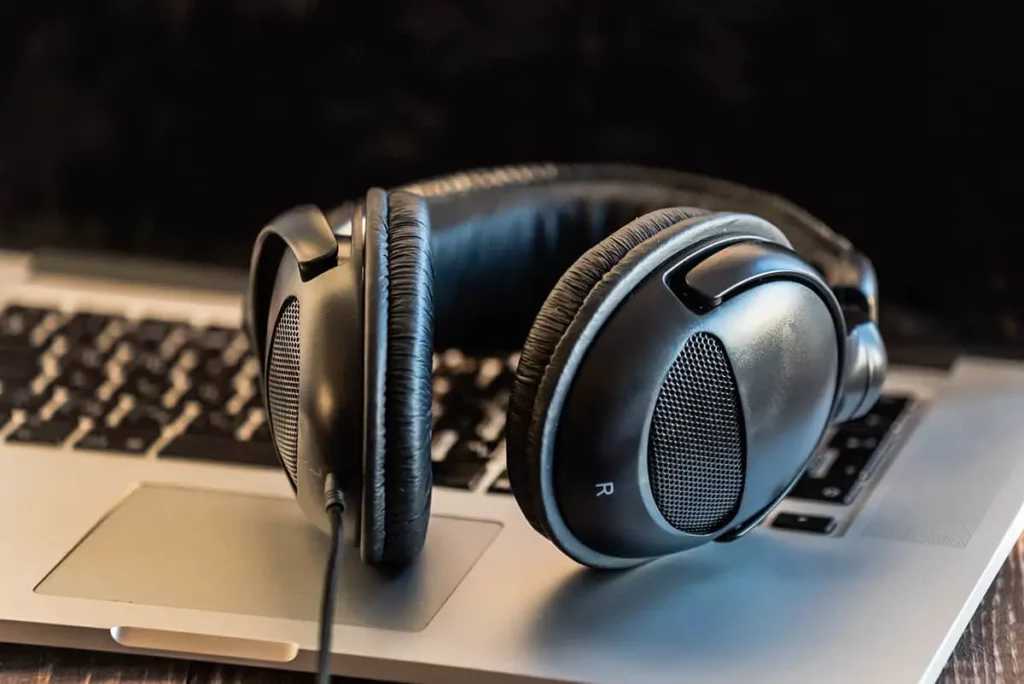High-quality gaming headphones are an indispensable piece of your cool gaming build. But gaming headphones can get extremely expensive. So, what’s driving up the price of high-quality headphones?
Here are 13 reasons why gaming headphones are so expensive:
- High-quality materials
- Microphone quality
- Superior drivers for better sound quality
- Surround sound
- Active noise cancelation
- Cool design
- Comfort
- On-headset controls
- Proprietary software
- RGB lighting
- Additional accessories
- Marketing costs
- Wireless Capabilities
This article will talk about all the factors mentioned above and how they affect the final price of your expensive gaming headphones.
1. High-Quality Materials
People often describe gaming headphones as cheap. You might even mistake them for a Happy Meal toy.
But with expensive gaming headsets from reputable brands, this is rarely the case. You may find some cheap plastic here, but it’s far less common.
While pricier headsets still have some plastic, they also include lots of steel and aluminum. Sometimes they craft an aluminum frame and encase it in plastic.
This results in significantly better durability and a nicer, more premium feel.
2. Microphone Quality
The microphone on gaming headsets is the recording device on gaming headsets. Not all of them have one, but most do.

Manufacturing the microphone isn’t necessarily the most expensive part. Testing the mic through trial and error is.
A lot of careful research goes into developing a good gaming microphone. For example, Sennheiser invests millions in development.
This applies to the entire headset. But building a tiny noise-canceling microphone takes a lot of effort and money.
Good microphones on cheap gaming headphones are few and far between.
When one of my friends hops up on Discord, I can always tell who has a pair of $20 headphones and who has $200 ones.
Some headphones’ mics are so good that you can use them for podcasts or YouTube videos.
3. Superior Drivers for Better Sound Quality
Headphone drivers are essentially tiny speakers that sit in your headphones. They contain a magnet, a metal coil, and a diaphragm that vibrates to reproduce sound.
Strong magnets made from rare-earth elements deliver better and louder sound. Of course, they’re also much pricier.
Expensive gaming headphones typically have pricy neodymium and cobalt magnets to get that audiophile-quality sound.
Drivers cost money to research, design, develop, and test.
And some gaming headsets use multiple drivers to achieve true surround sound. The Razer Tiamat was famous for using ten drivers to achieve true 7.1 surround sound.
Multiple drivers seriously drive the price up.
4. Surround Sound
Surround sound is the single most important feature in gaming headphones, period.
It creates a spatial sound effect that enables FPS gamers to tell exactly where their enemy is by listening for footsteps.

But gaming headphones don’t need multiple drivers for surround sound. Most of them use virtual surround sound and then market their headphones as 7.1 surround.
How do manufacturers achieve this?
They do it with the help of software processing. Even cheap gaming headphones have somewhat decent virtual surround sound.
However, just like with microphones, you can always distinguish expensive headphones from cheap ones. The built-in processing is nowhere near as accurate and clear.
If you’re looking for an edge in competitive shooters, get the Sennheiser GSP 550 Headset from Amazon.com. It has Dolby 7.1 surround sound and the great sound quality we expect from Sennheiser.
5. Active Noise Cancelation
You can find passive noise cancelation in any price bracket. It boils down to having a closed ear cup design combined with earpads that create a tight seal over your ear.
But active noise cancelation goes one step further. It uses a few microphones outside the headphones and a chip that processes the collected audio.
The microphones pick up any outside noise. The chip creates an identical but negative soundwave.
These two soundwaves collide and cancel each other out. You don’t hear any noise because it gets absorbed by the anti-phase.
This is perfect for gamers that play in a noisy environment. You won’t hear keyboard clacking, doors closing, the washing machine working, and so on.
The only downside – active noise cancelation is very expensive to develop and implement.
6. Cool Design
We’re all too familiar with the stereotypical “gaming” headsets. They’re edgy, colorful, and have lights everywhere.
But that’s something you only see in cheap Chinese headsets. A quick glance at Audio Technica or Steelseries gaming headphones will convince you that good design is important.
The manufacturers have to pay artists to create concepts. They also have to work with the audio engineering team to find a design that won’t compromise sound quality.
Striking the perfect balance between flashy gaming aesthetics and minimalism is the way to go nowadays.
7. Comfort
Good gaming headphones must be light. You’ll be wearing them for hours on end. Manufacturers may get away with a slightly heavier headset only if they add a ton of high-quality padding.
Cheap headphones have thin padding that sinks after a few weeks. They sometimes even have sharp pieces of plastic that dig deep into your scalp.
Expensive gaming headsets add a ton of good padding in the headband and ear cushions. Good padding will allow your skin to breathe without feeling stiff or hard.
Always look for a soft mesh fabric on the ear pads if you don’t want your ears to feel hot. You’ll need real or synthetic leather for passive noise cancelation, though.
You know that you’re looking at a good pair of gaming headphones if you can hardly feel them when you wear them.
That’s exactly how the HyperX Cloud II on Amazon.com got its name. I have tried dozens of gaming headphones, and these felt the most comfortable. They feature 7.1 surround sound and large, powerful drivers.
8. On-Headset Controls
A popular feature in gaming headsets is on-headset controls. Volume sliders and mute buttons are the most common ones.
Some of them have media controls so that you can control your music playlist in between match breaks.
Buttons and sliders are more common on wireless headphones. But you can find a few wired models with them too. After all, they are very useful for quick mic muting or volume adjustments.
But implementing these controls in an already crammed earcup is a nightmare for the design team.
It takes money to develop a tiny yet functional controller that won’t harm sound quality. These manufacturing costs are passed on to the customers.
9. Proprietary Software
The Logitech G Hub and Razer Synapse 3 are only a few examples of proprietary headset software. Every manufacturer under the sun has one nowadays.
This is a good thing. The software lets you update the firmware on your gaming headphones more easily. You can add a few cool effects like color cycling to the RGB through their program.
Most manufacturers will add a few additional features for headphones specifically.
Equalizers with automatic profiles for your games are very useful to give you a competitive edge in different games.
Some of these programs are surprisingly good. Most of them have some sort of shooter profile that turns down loud explosions and bangs from guns while keeping footsteps at max volume.
The proprietary software lets you adjust virtual surround sound or disable it completely. If you use the headphones for music as well, that’s a true life-saver.
10. RGB Lighting
RGB lights are unnecessary on headphones. If you’re not a streamer, that is. You can’t see the cool lights, so the colors are only for people looking at you. But since RGB has become synonymous with gaming, you can hardly find a pair of cans without it.
I’m not saying that this is something bad. But it does add to the cost of your already expensive gaming headphones.
RGB LEDs aren’t very expensive. However, they’re tiny, so soldering hundreds of these to a single pair of headphones is costly.
Developing software that controls the RGB lights and adds cool animations drives the cost up even further. So, RGB is the only feature on gaming headphones that add very little to your experience. Yet, it costs an arm and a leg to implement.
11. Additional Accessories
When you buy an expensive pair of gaming cans, you expect more than just headphones. Here are a few common things that come bundled with gaming headphones:
- High-quality travel bags.
- Additional audio cables.
- Different types of ear pads.
- Replacement headbands.
- Hardshell case.
- USB sound card.
Frankly, most of these accessories are very useful. For example, replacement ear pads are great because they’re usually made of different materials. You can swap between mesh and leather ear pads to change how the headphones feel and sound.
USB sound cards also deserve a special mention. They work just like a regular sound card that you plug into a free USB port. It boosts sound quality, adds control buttons, and improves the virtual surround sound.
12. Marketing Costs
A good marketing strategy can make or break a product. So, it comes as no surprise that manufacturers spend millions on advertising campaigns.
Just think about it. What are the odds that you’d buy the headphones you have right now if you didn’t hear about them online?
Manufacturers send the headphones to journalists and YouTubers for reviews. They pay for banner ads, commercials, and Facebook ads. Without good marketing, their business would fail.
Unfortunately, all that marketing substantially adds to the headphone’s price. There’s a good chance that 20-30% of the product cost goes towards marketing.
13. Wireless Capabilities
There are expensive gaming headphones, and then there are expensive gaming headphones.
The only difference between the two otherwise identical models? The pricier one works wirelessly.
Anybody can make Bluetooth or 2.4 GHz wireless headphones. But making a good gaming headset sound identical with or without a wire presents an enormous challenge.
There must be almost no latency between what happens on-screen and what you hear. Gamers are sensitive to latency. Even the smallest delay can make the difference between winning and losing a ranked match.
Wireless headsets have a battery and often come with charging stands, adding further to the cost. But it’s the research and development that drives the price up the most. A wireless pair must be indistinguishable from a wired one.
Are Expensive Gaming Headsets Worth It?
In general, expensive gaming headsets are worth it. The extra cost is usually attributed to better drivers and microphones, surround sound, and comfort. They’re also better built, resulting in higher durability and a premium feel.
You don’t have to spend a fortune to get good headphones, though. The sweet spot is between $80 and $150. You can go slightly higher if you want wireless headphones and better RGB.
For gaming headphones, always ensure that the pair has:
- Decent sound quality.
- A great microphone.
- Good virtual surround sound technology.
Those three are by far the most important features. If it’s a wireless headset, check the reviews to see if people complain about lag. Stuff like RGB and on-headset buttons are just a cool bonus.
Headphones vs. Gaming Headset
Traditional headphones tend to sound better than headsets marketed towards gamers. However, this isn’t always the case. Gaming headsets have better sound quality than they used to nowadays. Also, you get a microphone and better virtual surround sound technology with a gaming headset.
So which should you get? Headphones? Or a gaming headset? This is one of the hardest questions to answer.
On average, headphones that cost about the same as a gaming headset will sound better. It’s hard to argue against.
They don’t have to spend money on a microphone, software, design, marketing, RGB, and so on. Their only focus is crafting cans that sound good.
But a high-quality gaming headset will often come close to good headphones. Plus, you get a noise-canceling microphone that’s designed for voice chat.
If you’re a casual gamer who wants to use the headphones for music, get headphones and a separate mic.
But if you’re a hardcore FPS gamer, don’t save a penny and get the best gaming headset on the market.







